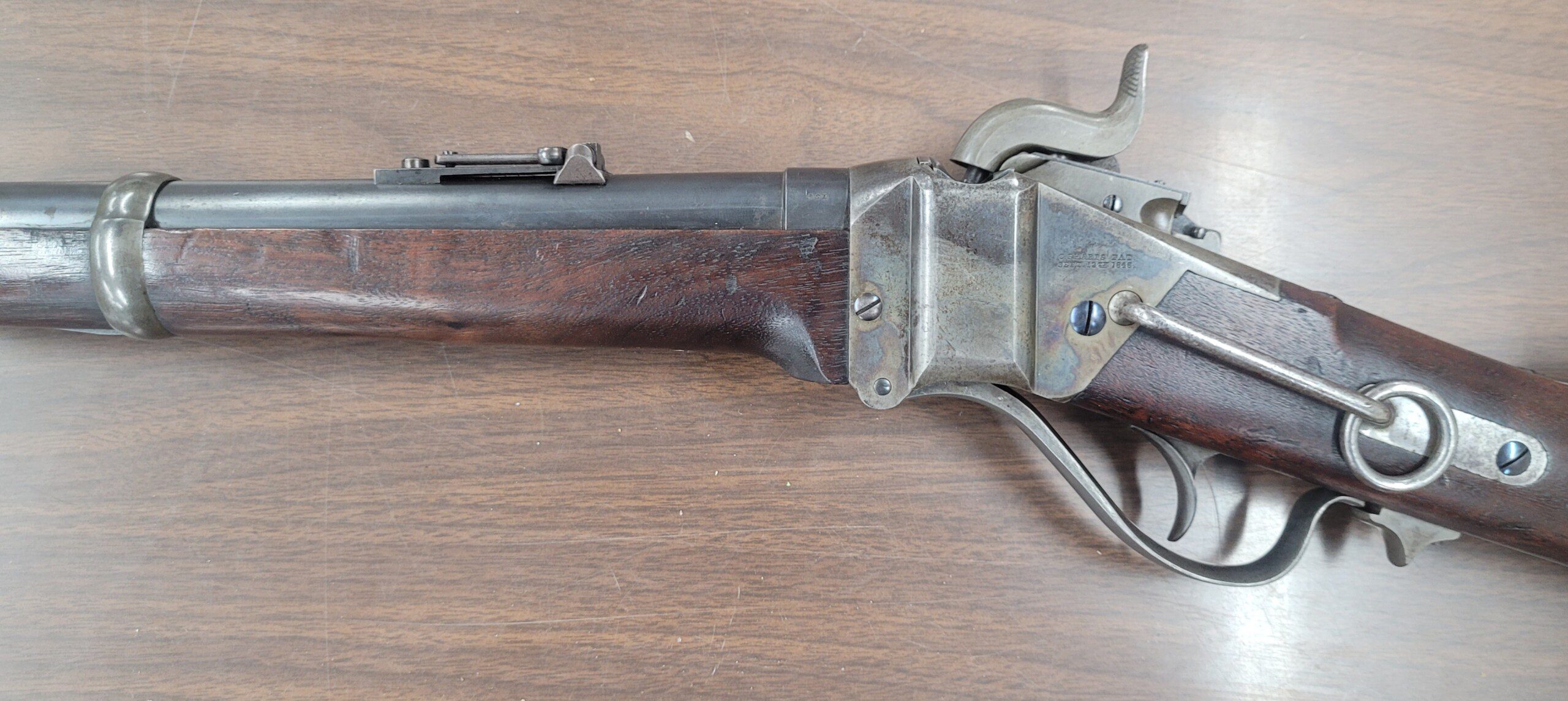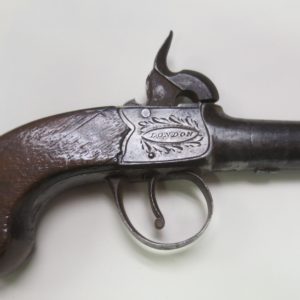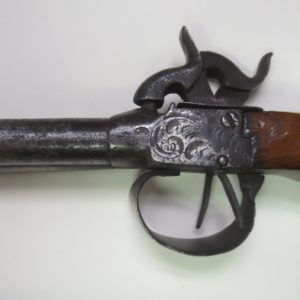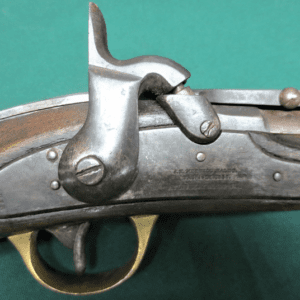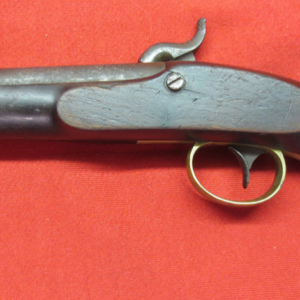Description
This is one of the finest condition Sharps carbines I have ever seen anywhere. It retains most of the original finish and case colors overall and the action and bore are like new. This is a museum grade example of the most famous single-shot, percussion cavalry firearm used during the Civil War! The Sharps carbine is a .52 caliber, breechloading weapon invented and patented by Hartford, Connecticut native Christian Sharps.
It is serial # C, 31335 and has a 21½” long round barrel and a ‘straight-breech’ type lockplate fitted to its walnut stock and forend. The barrel address is visibly strong with “SHARPS RIFLE / MANUFG CO. / HARTFORD, CONN” in front of rear sight. “NEW MODEL 1863” stamped to rear of sight. The stock and forend appear never to have been cleaned. The inspector cartouches at the sling bar area are lightly struck but visible and the stock retains most of the original grain feathering effect. All major components have sub-inspector marks visible.
All screws are original and in fine condition. The metal surface of the carbine appears a crisp bright blue with generous bright case colors. All maker markings and patent designations are crisp. The serial number is sharp and strongly stamped unto the upper plate tang. The breechblock operating lever mechanics are crisp and the iron bar tight and has its iron ring. The bore with its six-groove rifling is shiny and bright with no pitting. This New Model 1863 Sharps carbine is a fine, original percussion cavalry short arm of the Civil War Union army of the Confederacy, if they could snag one.
While it has no direct serial number match in the Springfield Research database, it does fall within the range of weapons known shipped to Ft. Keogh in Montana for intended distribution to Native American forces. Fort Keogh was a United States Army post located at the western edge of modern Miles City in the U.S. state of Montana. It is situated on the south bank of the Yellowstone River, at the mouth of the Tongue River.
Colonel Nelson A. Miles, commanding the 5th Infantry Regiment, founded the post in August 1876, in the wake of the Battle of the Little Bighorn, as a base for patrols to prevent the Cheyenne and Sioux involved in the battle from escaping to Canada. The fort was originally known as the Tongue River Cantonment for two years. When relocated one mile west in 1878, it was renamed Fort Keogh in honor of Captain Myles Keogh, who was killed at the Little Bighorn. In 1877, the fort became the headquarters for the newly created District of the Yellowstone (a sub-unit of the Department of Dakota), which was commanded by Miles. The development of Fort Keogh as a military installation soon stimulated traders to supply the liquor and other service businesses that were the beginning of Miles City.

